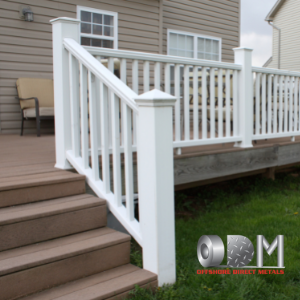The Thermoplastic Extrusion Process
Plastic extrusions are used for many applications and settings in our everyday lives. Sometimes these components may go unnoticed, but they’re incredibly useful. Plastic extrusion suppliers produce materials for anything from weatherstripping, wire insulation, and pipe tubing to deck railings, sheetings, and window frames. When searching through plastic extrusion companies in Florida to find the right one, you’ll want to know you can trust their process to deliver high-quality results. At OD Metals, we take pride in our thorough and meticulous extrusion processing to give our customers functionality and longevity in every batch.
Read on for a breakdown of the thermoplastic extrusion process used by plastic extrusion suppliers.
Step 1: Feeding the Plastic & Additives
 Plastic extrusion companies in Florida will typically start by feeding a thermoplastic polymer, resin, or other plastic material into the loading port at the top of a hopper.
Plastic extrusion companies in Florida will typically start by feeding a thermoplastic polymer, resin, or other plastic material into the loading port at the top of a hopper.
For customizations such as colour and material enhancers such as ultraviolet (UV) inhibitors are added in pellet form to the hopper, where the materials are all melted down in the hopper where it moves through to the barrel of the extruder until it comes in contact with the screw.
Step 2: Screw Rotation
The screw design differs depending on the final extrusion design and application. To customize your final product, reach out to OD Metals, your trusted plastic extrusion supplier, to learn more about the screw designs available to you. Once in contact with the screw, powered by an electric motor, the melted plastic is pushed by the rotating screw until it reaches the barrel, which is carefully heated to the perfect melting temperature.
Step 3: Plastic Compression
As the plastic moves through the barrel, the screw threads are reduced, increasing the plastic compression and enhancing the extrusion. In most cases, plastic extrusion manufacturers will use at least 3 PID (proportional integral derivative) controllers to create strategic heat zones that gradually increase the temperature throughout the barrel through compression and friction.
Step 4: Screen Pack & Mixing
Once leaving the screw and barrel, the melted plastic is run through a screen that removes contaminants from the mixture. At this point, the plastic, resin, or polymer is mixed thoroughly until homogenous and clean. Because of the immense pressure during this stage, a breaker plate is used to support the screen pack.
Step 5: The Plastic Extrusion Die
The final step of the thermoplastic extrusion process is pushing the plastic through the die. The die forms the melted plastic into the final shape to meet the desired properties. At this stage, manufacturers ensure an even flow of plastic to ensure the extrusion is well-distributed and prevents stressing or warping.
When ordering custom extrusions from a plastic extrusion company in Florida, you can customize dies for specially tailored plastic extrusions. At OD Metals, we will work directly with you to finetune custom dies and extrusions for the perfect components for any project.
A Plastic Extrusion Supplier Near You
At Offshore Direct Metals, we customize plastic extrusions for a variety of applications and industries, from construction to agriculture. We take care in every step of our process, all the way to finsihes/coatings and quality control.
